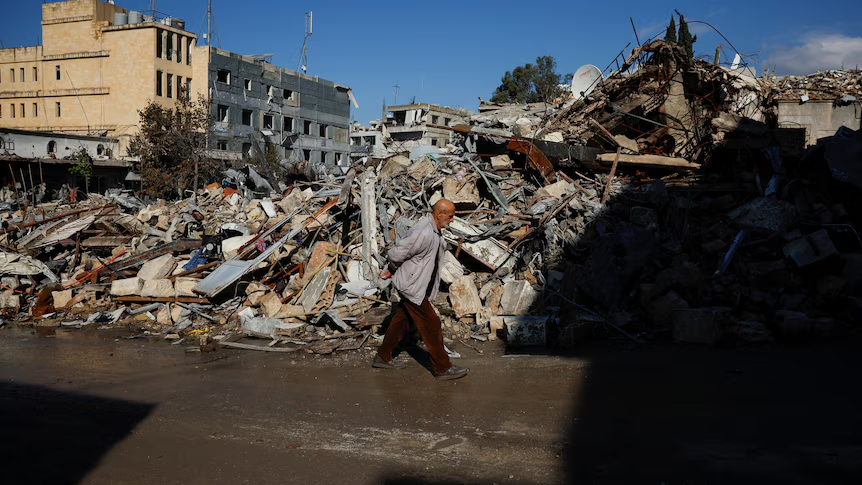A fragile ceasefire between Israel and Hezbollah, brokered by the United States and France, has been jeopardized as tensions flared along the southern Lebanese border. This truce, which began on Wednesday, aimed to end 14 months of intense conflict and allow displaced civilians from both nations to return home.
However, by Thursday morning, reports emerged of Israeli tank fire striking six areas in southern Lebanon, which Israel claims was in response to violations by Hezbollah.
The Ceasefire Agreement and Immediate Challenges
The ceasefire deal marked a significant diplomatic effort in a region often marred by relentless hostilities. Brokered by international powers, the agreement sought to halt the deadliest confrontations in years between Israel and Hezbollah, an Iran-backed militant group.
The terms stipulated that Israeli forces would have up to 60 days to withdraw from southern Lebanon, and both sides were prohibited from launching offensive operations.
Despite these terms, Israel’s military reported breaches early Thursday. They claimed that individuals, including some in vehicles, entered the southern zone, prompting Israeli forces to respond with tank fire.
Lebanese security sources confirmed the strikes, which hit areas including Markaba, Wazzani, Kfarchouba, Khiyam, Taybe, and the Marjayoun plains. These locations, all within two kilometers of the Blue Line demarcating the border, witnessed intense shelling, resulting in two reported injuries in Markaba.
Read : Finally, After 13 Months of War: Israel-Lebanon Ceasefire Begins
The ceasefire was designed to create a safe environment for civilians to return to their homes. However, Israeli authorities have urged residents along the border to stay away, citing ongoing security threats.
Read : Israeli Foreign Minister Threatens Iran, Saying It ‘Deserves to Be Destroyed’
This directive contrasts sharply with statements from Lebanon’s parliamentary speaker, Nabih Berri, who announced that Lebanese citizens could safely return to their homes. The discrepancy underscores the fragile nature of the truce and the differing perspectives on security and stability in the region.
The Impact on Civilians and Displaced Populations
The ongoing conflict has had devastating effects on civilian populations in both Israel and Lebanon. Over the past 14 months, border towns have been transformed into battlegrounds, forcing thousands to flee their homes.
The ceasefire brought a glimmer of hope for these displaced families, many of whom had been living in temporary shelters or with relatives further inland. However, the renewed hostilities threaten to dash these hopes and prolong the humanitarian crisis.

In southern Lebanon, families attempting to return to their properties face significant risks. Israeli troops remain stationed in several Lebanese border towns, and surveillance drones continue to patrol the skies.
The presence of these forces and the potential for further violence have created an atmosphere of fear and uncertainty. For many displaced families, the decision to return home is fraught with danger.
The situation is further complicated by the broader geopolitical dynamics at play. Hezbollah, which has suffered significant losses during the conflict, including the death of its leader Sayyed Hassan Nasrallah and several top commanders, remains defiant.
The group has vowed to monitor Israel’s withdrawal closely, with “hands on the trigger.” This rhetoric reflects the deep-seated animosity between the two sides and the potential for further escalation.
Geopolitical Implications and Future Prospects
The conflict between Israel and Hezbollah is not just a localized battle; it has significant implications for the broader Middle East. Hezbollah’s ties to Iran and its role as a major player in Lebanese politics mean that any escalation in violence could have far-reaching consequences. The group’s resilience and defiance, despite recent setbacks, highlight the complex interplay of regional power dynamics.
For Israel, the conflict with Hezbollah is part of a broader struggle against Iran’s influence in the region. The simultaneous war against Hamas in Gaza adds another layer of complexity, stretching Israel’s military resources and political capital.

Israeli Prime Minister Benjamin Netanyahu’s decision to instruct the military not to allow residents back to border villages reflects a cautious approach, aimed at preventing further casualties and maintaining a strategic advantage.
The ceasefire’s fragility underscores the challenges of achieving lasting peace in a region where historical grievances, political rivalries, and external influences intersect. While the agreement represented a rare diplomatic success, its longevity depends on the willingness of both sides to adhere to its terms and the ability of international mediators to enforce compliance.
A Fragile Path to Peace
The recent flare-up along the Israel-Lebanon border is a stark reminder of the challenges facing any peace initiative in the Middle East. The ceasefire between Israel and Hezbollah, though a significant diplomatic achievement, remains precarious.
The events of Thursday morning, with Israeli tank fire striking southern Lebanon in response to alleged breaches, highlight the deep mistrust and volatility that continue to define the relationship between these two adversaries.
For civilians caught in the crossfire, the path to peace remains uncertain. The ongoing presence of Israeli troops in Lebanese territory and the defiant stance of Hezbollah create a dangerous and unstable environment.
The success of the ceasefire will depend not only on the actions of the two sides but also on the efforts of international mediators to maintain pressure and encourage dialogue.
In a region where the scars of conflict run deep, the road to lasting peace is fraught with challenges. The current ceasefire offers a glimmer of hope, but its success will require a sustained commitment to diplomacy, accountability, and the protection of civilian lives.
let’s enjoy few years on earth with peace and happiness….



